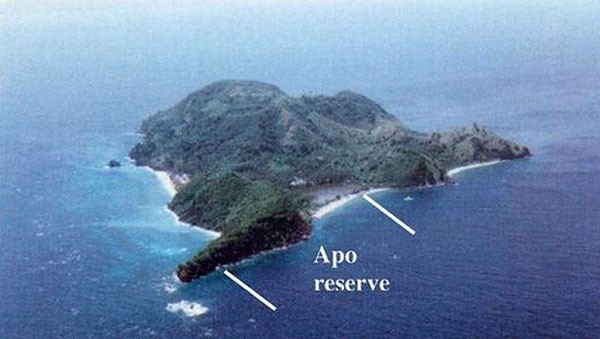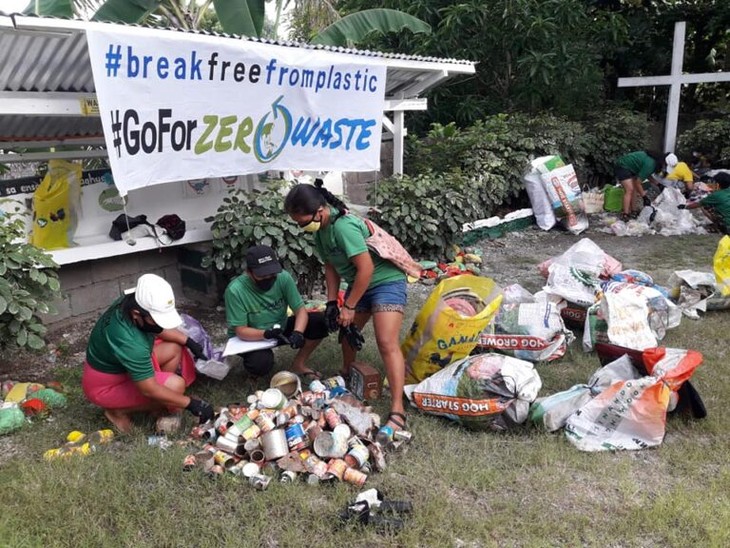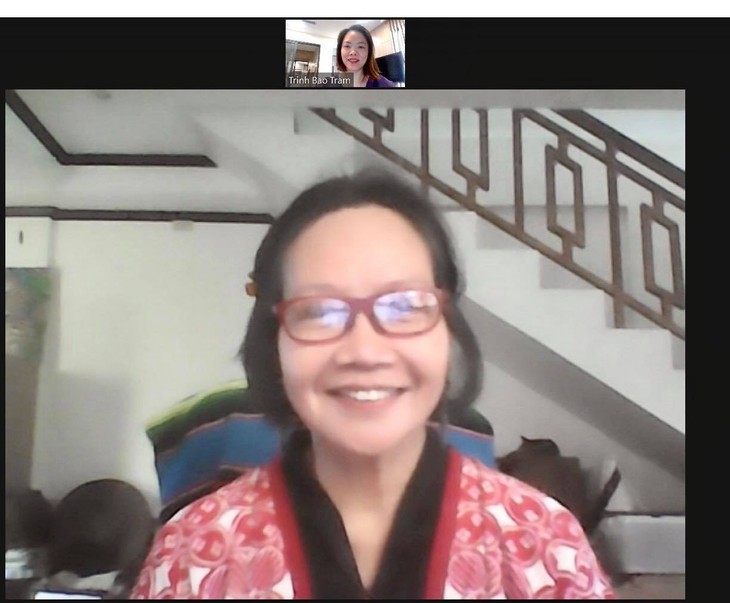(VOVWORLD) - With thousands of islands to choose from, picking the best island in the Philippines could be pretty overwhelming. But Apo Island is frequently among the top 10 islands recommended by people who have visited the Philippines. This week our guest Merci Ferrer, Co-Convener of the War on Waste - Break Free From Plastic in Negros Oriental, where Apo Island is located, will tell us one reason why.
 Swimming with turtles is popular in Apo. (Photo: Ara Juan/diverbliss.com) Swimming with turtles is popular in Apo. (Photo: Ara Juan/diverbliss.com)
|
Bao Tram: Welcome, Merci Ferrer, to VOV’s Cultural Rendezvous! Tell us a little bit about yourself.
Merci Ferrer: I’m a mother of two daughters, a long time Zero Waste and anti-incineration advocate and worker.
Bao Tram: Popular travel guide book publisher, Lonely Planet, describes Apo island as having some of the best diving and snorkelling in the Philippines while the BBC calls it an undiscovered jewel. Why does Apo island earn such praise?
Merci Ferrer: If you’re familiar with the Philippines, Apo Island is in the central part of the Philippines. It’s part of Dauin municipality in the province of Negros Oriental. It’s a small island with about 1,000 people.
It’s famous for its coral reefs, and sea turtles that swim alongside humans. It’s a living laboratory for marine sciences studies. It’s a training ground for technical diving and, of course, the hospitality of the residents of Apo Island is also famous.
It’s considered an important island, not only because of its beauty and diversity, but also because it’s a protected area. In the Philippines there are more than 60 protected areas. Apo Island is actually named the Apo Island Protected Landscape and Seascape, which means the government and private sector are both helping to preserve its diversity and beauty.
It’s very important for Apo residents because it’s a tourist destination, which means their livelihood depends on people coming in and that depends on the beauty and the richness of the island.
 The marine sanctuary at Apo Island. (Photo: ecotippingpoints.com) The marine sanctuary at Apo Island. (Photo: ecotippingpoints.com)
|
Bao Tram: I’m very curious about how Apo can well preserve its biodiversity while making itself a popular tourist destination because travel has the potential to deepen the negative impact on the environment. Do they have any specific environmental protection initiatives such as the Zero Waste you said earlier that you have been advocating?
Merci Ferrer: The residents of Apo are fortunate to have community leaders that are responsible about the island’s waste management issues.
Before the Zero Waste system was launched, the island had a lot of waste. They accepted tourists, both local and foreign, but they had a lot of waste because the tourists just left their waste behind on the island.
It’s been a year now that Apo Island has adopted the Zero Waste system and the residents themselves are saying it’s a good thing the system was introduced to them. Their consciousness was raised. They learned how to manage their waste properly. That’s one more thing that Apo Island is famous for.
It is now being cited as one of the Zero Waste islands of the Philippines. In fact, it was the first island, the small island, a Zero Waste island in the Philippines.
 Nestle, Unilever, and Mondelez top the list of single use plastics (sachets) on Apo island – Apo Island Brand Audit, August 2, 2020. (Photo: GAIA) Nestle, Unilever, and Mondelez top the list of single use plastics (sachets) on Apo island – Apo Island Brand Audit, August 2, 2020. (Photo: GAIA)
|
Bao Tram: What problems have the people of Apo encountered in implementing the Zero Waste program?
Merci Ferrer: I think it’s more ‘difficulties’ than ‘problems’. At first the residents’ awareness of how to properly manage their waste was low.
When the Zero Waste model was introduced to the island, they were surprised by really basic, simple things like how to segregate your compostable waste, your recyclable waste, and your residual waste.
Apo Island has really learned a lot from the Zero Waste program and now they are really managing their waste properly.
Bao Tram: What have been the results so far of the Zero Waste program on Apo Island?
Merci Ferrer: Number one is a dramatic decrease in the island’s waste. In the past they needed two trucks to load all their waste. Now it’s less than a truck a month.
Number two is the participation and collaboration of the residents in the Zero Waste program – almost 100%. A lot of members of the community recognize and respect the system that they have.
Number three is that the system is in place now, meaning when is the collection of segregated waste, how are they collecting it, and where are they going to put all the residuals. Now they have guidance on where to put things.
Apo Island’s 1,000 people have 4 Materials Recovery Facilities (MRFs). That’s basically an area where you put and manage compostable waste. Those are three dramatic things that are happening on Apo Island after 1 year of doing Zero Waste.
 Volunteers from various sectors including the youth took part in the Dumaguete at-source waste assessment and brand audit (WABA). (Photo: Natasha Kunesch/GAIA) Volunteers from various sectors including the youth took part in the Dumaguete at-source waste assessment and brand audit (WABA). (Photo: Natasha Kunesch/GAIA)
|
Bao Tram: I’m wondering how did you persuade local people to adopt the program?
Merci Ferrer: I think the most important thing we always say at the Zero Waste office is that the leaders have a political will. It’s important for the leaders to embrace the project to tell the people this is what they are going to do, and this is how they are going to implement it. That is what has happened on Apo Island.
Another important part of the Zero Waste system is to have waste collectors who are organizers in the community – people they know who will tell them, ‘Hey, it’s time for you to segregate your wastes and we’ll collect them. It’s really a personal thing doing Zero Waste because it must become the style of your community, your household, your neighborhood. If the community and individuals really embrace the project, like ‘this is ours, this is what we are going to do’, it will be a successful initiative.
Bao Tram: With the achievements you have gained so far, do you have any environmental message for our listeners?
 Merci Ferrer, Co-Convener of the War on Waste - Break Free From Plastic in Negros Oriental Merci Ferrer, Co-Convener of the War on Waste - Break Free From Plastic in Negros Oriental |
Merci Ferrer: Dear listeners, first, I hope you can visit Apo Island soon. Second, if a small island like Apo can implement a Zero Waste system and be consistent about it, I’m sure other islands and communities, whether in the Philippines or in Vietnam, can definitely do the same, because Zero Waste is very clear: there is a system, there are approaches and simple technologies. But it requires the political will of the leaders and the collaboration and cooperation of the people.
My environmental message is: it’s crucial for islands to do Zero Waste because of climate change and rising water. If we manage the resources we have – including waste, a kind of resource – in a proper way, like the Zero Waste system, it will be a win-win for all of us.
Bao Tram: Thank you, Merci, for the amazing story about Apo and its Zero Waste model. It’s our pleasure to have you here today.
Merci Ferrer: Thank you so much for this opportunity to talk to your listeners in Vietnam and elsewhere. I hope you can visit Apo Island soon. Let’s go for Zero Waste. Thank you...Bye!